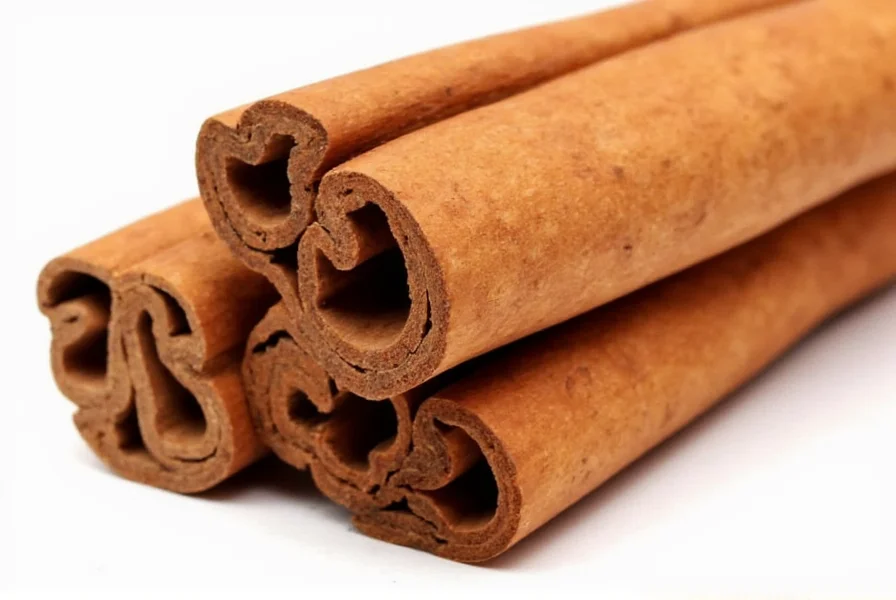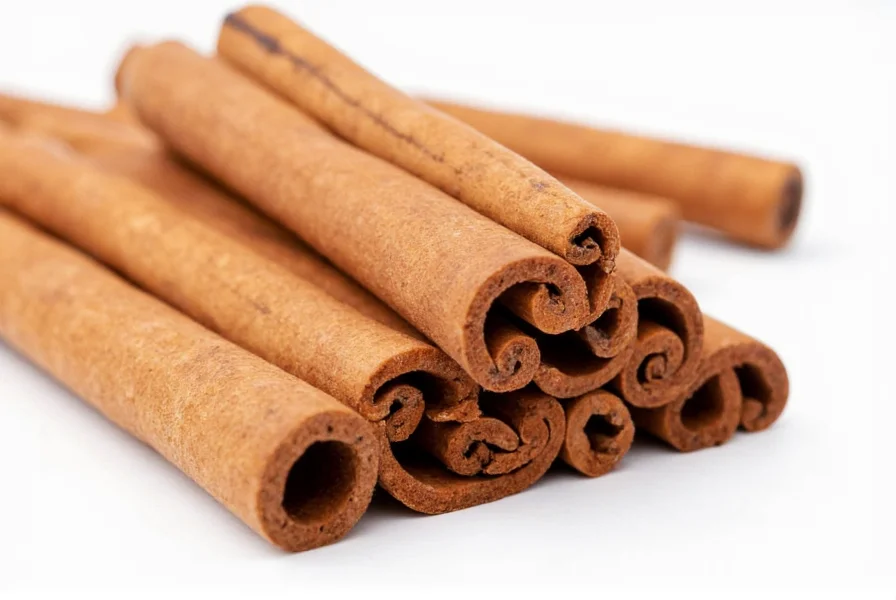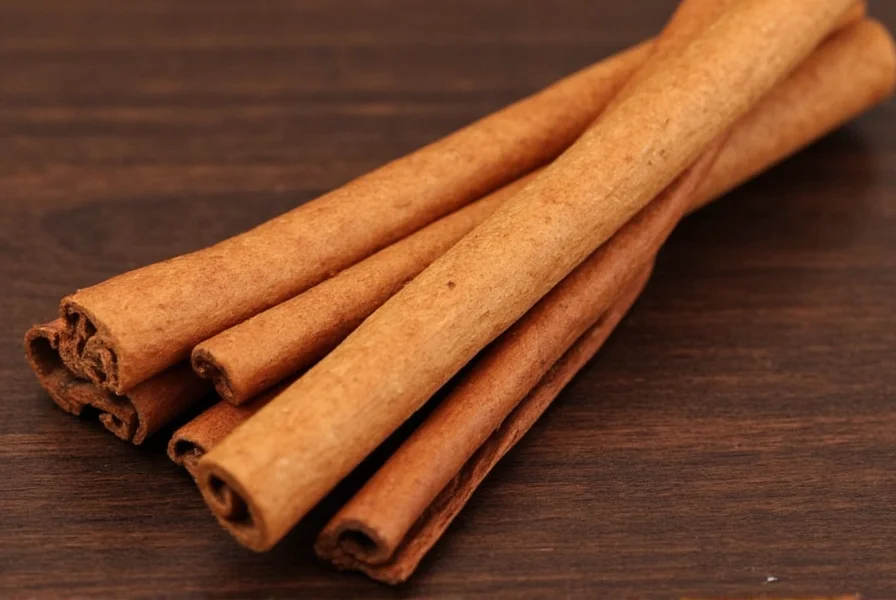Cinnamon sticks represent one of the world's oldest and most versatile spices, with historical use dating back to ancient Egypt. Unlike ground cinnamon, these curled bark pieces maintain their aromatic compounds longer and provide a more nuanced flavor profile in culinary applications. The two primary varieties—Ceylon and Cassia—differ significantly in chemical composition, flavor intensity, and health implications.
Understanding Cinnamon Stick Varieties
When exploring cinnamon stick types for baking and cooking, it's crucial to distinguish between the two main varieties available in most markets:
| Characteristic | Ceylon Cinnamon | Cassia Cinnamon |
|---|---|---|
| Origin | Sri Lanka | China, Indonesia, Vietnam |
| Appearance | Multiple thin layers, soft texture | Single thick layer, hard texture |
| Taste Profile | Mild, sweet, complex | Strong, spicy, more intense |
| Coumarin Content | Very low (0.004%) | High (1-5%) |
| Common Names | "True" cinnamon, Mexican cinnamon | Chinese cinnamon, Saigon cinnamon |
Ceylon cinnamon, often called "true cinnamon," features multiple delicate layers that resemble a cigar roll. Its flavor is more subtle and complex with citrus notes, making it preferable for delicate cinnamon stick recipes for beverages. Cassia cinnamon, which accounts for approximately 90% of cinnamon consumed in the United States, has a stronger, more pungent flavor and contains significantly higher levels of coumarin—a compound that can cause liver damage in excessive amounts.

Health Benefits Supported by Research
The medicinal properties of cinnamon sticks have been studied extensively. The primary active compound, cinnamaldehyde, accounts for approximately 60-90% of cinnamon's essential oil and contributes to many of its health effects:
- Blood sugar regulation: Multiple studies, including a 2015 meta-analysis published in the Journal of the Academy of Nutrition and Dietetics, found cinnamon may help reduce fasting blood glucose levels by 10-29 mg/dL in people with type 2 diabetes
- Antioxidant properties: Cinnamon ranks #1 among 26 common spices for antioxidant activity according to research in the Journal of Agricultural and Food Chemistry
- Anti-inflammatory effects: The spice demonstrates potential to reduce inflammatory markers like TNF-α and IL-6
- Heart health support: Some research indicates cinnamon may help lower LDL cholesterol and triglycerides
It's important to note that most research uses cinnamon extracts rather than whole sticks, and cinnamon stick consumption recommendations should consider the variety. The European Food Safety Authority recommends limiting coumarin intake to 0.1 mg per kg of body weight daily. For Cassia cinnamon, this translates to approximately 1-2 sticks daily for most adults, while Ceylon presents minimal coumarin concerns.
Culinary Applications and Usage Tips
Understanding how to use cinnamon sticks in cooking properly enhances both flavor and potential health benefits. Unlike ground cinnamon, sticks release flavor gradually, making them ideal for:
- Infused liquids: Simmer in milk, wine, or broth for 10-15 minutes to extract flavor without bitterness
- Rice and grain dishes: Add to cooking water for subtle flavor infusion
- Pickling solutions: Provides complex spice notes without clouding the liquid
- Cocktails and beverages: Use as both flavoring and decorative stir stick
For maximum flavor extraction from cinnamon sticks, lightly crush them with a mortar and pestle before use. This increases surface area without creating fine particles that can make liquids cloudy. When substituting for ground cinnamon, use one 2-3 inch stick to replace ½ teaspoon of powder, removing the stick before serving.

Proper Storage and Selection Guidelines
To maintain freshness of cinnamon sticks over time, proper storage is essential. Exposure to light, heat, and moisture rapidly degrades the volatile oils responsible for cinnamon's characteristic aroma and flavor.
When selecting high quality cinnamon sticks, look for:
- Bright, consistent color (light tan for Ceylon, reddish-brown for Cassia)
- Intact, tightly rolled layers without cracks or breaks
- Strong, sweet aroma when broken
- Flexible texture that bends slightly without snapping
Store cinnamon sticks in an airtight container away from light and heat. Properly stored, they maintain peak quality for 1-2 years compared to 6 months for ground cinnamon. Check freshness by snapping a small piece—a fresh stick should break cleanly with a strong aroma, while stale sticks crumble without significant scent.
Safety Considerations and Substitutes
While generally safe, cinnamon stick consumption safety guidelines warrant attention, particularly regarding coumarin content in Cassia varieties. People with liver conditions or those taking medications metabolized by the liver should consult healthcare providers before regular consumption.
When cinnamon sticks aren't available, suitable alternatives to cinnamon sticks in recipes include:
- Ground cinnamon (use ½ teaspoon for each 2-inch stick)
- Allspice (use ¾ the amount of cinnamon called for)
- Nutmeg (use sparingly, as it's more potent)
- Apple pie spice blend (use equal amount)
For those seeking cinnamon stick flavor without the spice, consider using cinnamon essential oil (1-2 drops equals one stick) or cinnamon extract (½ teaspoon equals one stick), though these lack the visual appeal of whole sticks.
Conclusion
Cinnamon sticks offer a versatile spice option with distinct advantages over ground cinnamon, including longer shelf life, more controlled flavor release, and potentially greater health benefits when selecting the appropriate variety. Understanding the differences between Ceylon and Cassia varieties helps consumers make informed choices based on both culinary preferences and health considerations. Whether used for flavoring beverages, enhancing savory dishes, or potentially supporting wellness goals, properly selected and stored cinnamon sticks remain a valuable pantry staple.
Frequently Asked Questions
What's the difference between cinnamon sticks and ground cinnamon?
Cinnamon sticks are the dried bark of cinnamon trees, while ground cinnamon is the powdered form. Sticks maintain their flavor compounds longer (up to 2 years vs 6 months for ground), offer more controlled flavor release in cooking, and generally contain less coumarin than ground Cassia cinnamon. The flavor profile of sticks is typically more subtle and complex compared to the more intense flavor of ground cinnamon.
Which cinnamon stick variety is healthier, Ceylon or Cassia?
Ceylon cinnamon is generally considered healthier for regular consumption due to its significantly lower coumarin content (0.004% vs 1-5% in Cassia). Coumarin can cause liver damage in high doses. While both varieties offer similar health benefits from cinnamaldehyde, Ceylon's safety profile makes it preferable for daily use, especially for those with liver conditions or taking medications.
How many times can you reuse a cinnamon stick?
You can typically reuse a cinnamon stick 2-3 times before it loses significant flavor. After simmering in liquid, remove the stick, let it dry completely, and store in an airtight container. Each subsequent use will yield milder flavor. For optimal flavor extraction in the first use, lightly crush the stick before adding to your recipe.
Can cinnamon sticks help lower blood sugar?
Research suggests cinnamon may help improve insulin sensitivity and lower fasting blood glucose levels. A 2015 meta-analysis found reductions of 10-29 mg/dL in people with type 2 diabetes. However, most studies use concentrated extracts rather than whole sticks, and effects vary by individual. Cinnamon should complement—not replace—standard diabetes management approaches.











 浙公网安备
33010002000092号
浙公网安备
33010002000092号 浙B2-20120091-4
浙B2-20120091-4